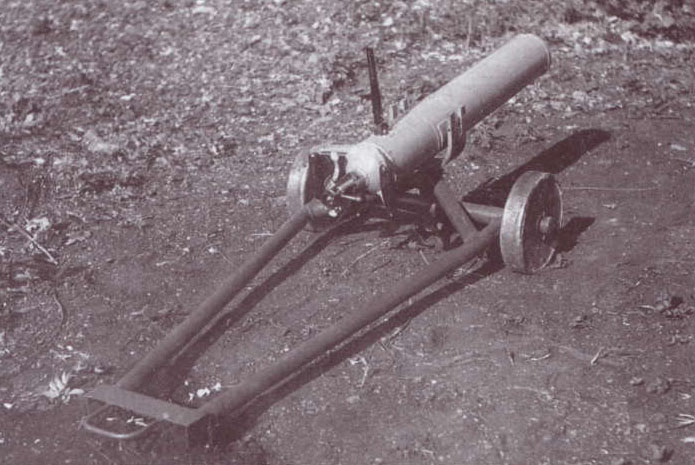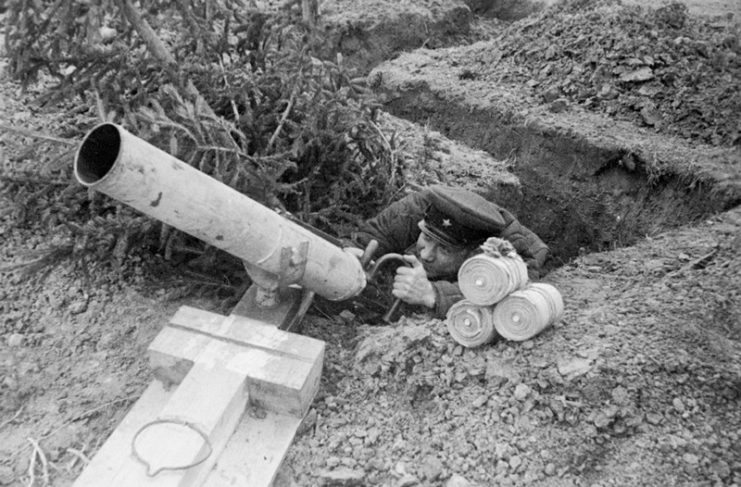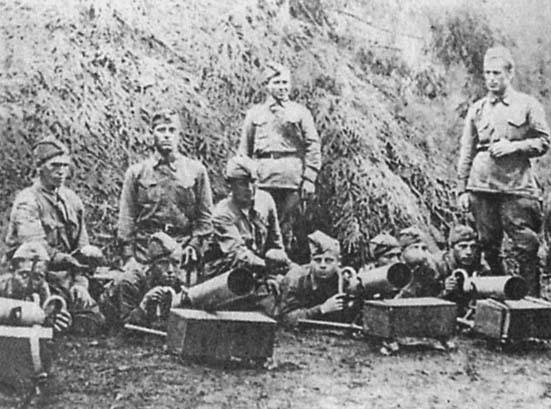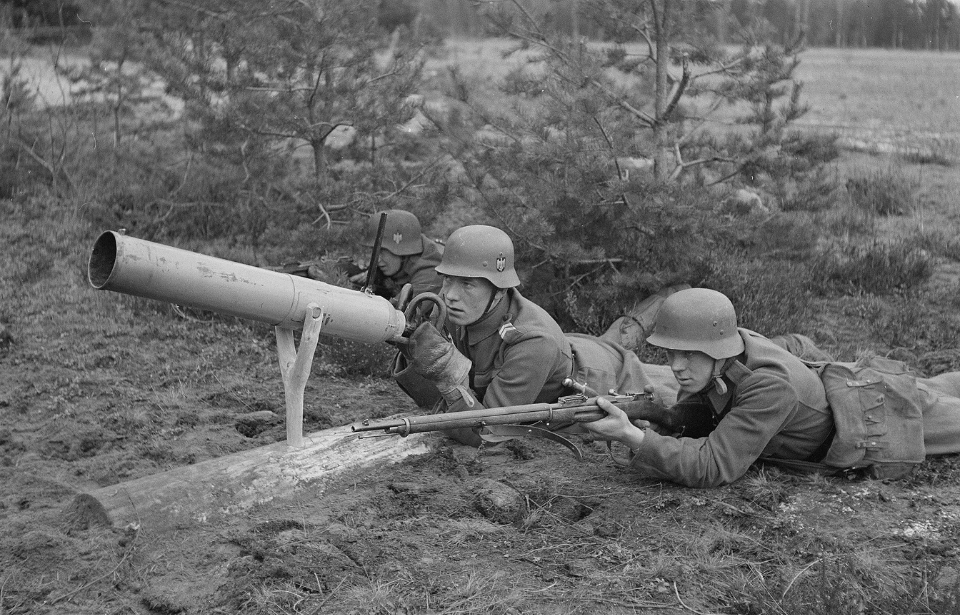Several weapons were created during the Second World War. Some achieved success and were widely used during the conflict, like the M3 Grease Gun and Bren light machine gun. Others, however, were retired shortly after their introduction. An example is the Soviet Ampulomet, an anti-tank gun that failed to meet the Red Army’s expectations.
Needing to defend against the German invasion

In June 1941, the Germans started their invasion of the Soviet Union. Known as Operation Barbarossa, the offensive lasted until January of the next year and included some of the most brutal battles of the Second World War. The Red Army eventually emerged victorious over the enemy forces, but only after suffering over 4.4 million casualties. In contrast, the Germans suffered one million casualties, with nearly 187,000 soldiers killed in action (KIA).
Despite their determination to repel the invasion, the Soviets were uncertain of their success, especially in the early stages. Because of this, they quickly began developing a range of weapons to use against the Germans. This effort led to the creation of a unique anti-tank gun, which fired glass projectiles that shattered upon impact, causing their contents to penetrate slots within a vehicle and incapacitate both the vehicle and its crew. This weapon was called the Ampulomet.
Ampulomet specs

The Ampulomet was a particularly large weapon, weighing 26 kg and sitting at one meter in length. Given this, it needed three men to effectively operate, with them using a folding, graduated rear sight to aim at targets. It’s primary components were rather simple, consisting of an unrifled tube and a breech mounted on a Y-shaped pedestal, which pivoted on trunnions. This, along with two breech-mounted handles, allowed the anti-tank gun to change the elevation at which the projectile was launched.
The Ampulomet’s 125 mm barrel used a black powder charge to fire its 1.5-kg glass AZh-2 ampules. Sources vary as to what was encased within the shells; it’s said to have either been a napalm-like substance, such as jellied gasoline, or an incendiary mixture containing 80 percent phosphorus and 20 percent sulfur.
Better known as “KS,” it ignited when exposed to air, emitting thick white smoke and flames that would burn at between 1,470 and 1,830 degrees Fahrenheit for up to three minutes. The mixture would seep into the vision slots and engine grill of a tank, igniting fuel and ammunition, and choking those within.
The Ampulomet saw a short service life

The Apulomet was introduced into service with the Red Army in 1941. It was used in a limited capacity on both the Eastern Front and during the Continuation War. A number were captured by the Finnish during the latter and subsequently tested. On the Eastern Front, the anti-tank weapon primarily saw action during the Battle of Stalingrad, where dedicated platoons used it to incinerate German dugouts and positions.
Servicemen quickly realized the Ampulomet wasn’t particularly effective against tanks, but did hold its own against stationary targets. It was also used to launch propaganda leaflets into German holdouts.
Want War History Online‘s content sent directly to your inbox? Sign up for our newsletter here!
By 1942, the Ampulomet had become largely obsolete, and by the end of the year and into early 1943, it had completely been removed from use. In its place, the Soviets equipped themselves with Molotov cocktails and a host of anti-tank weaponry, including rifles, grenades and other guns.
